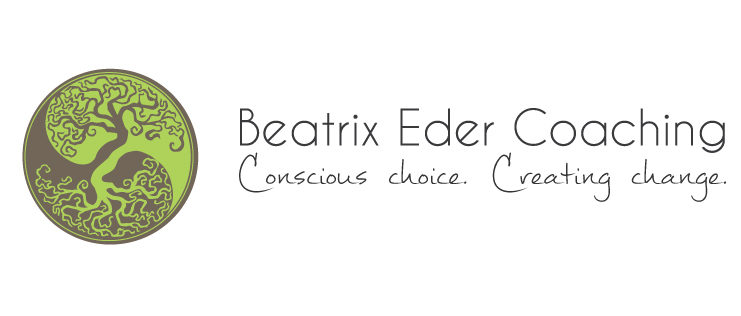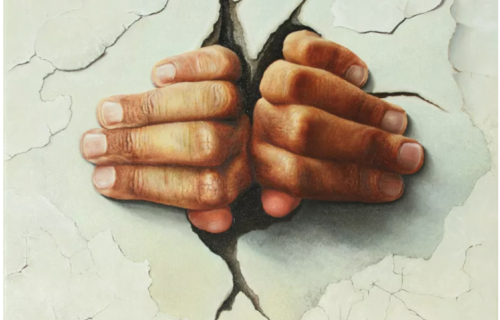
Leverage collective intelligence through Inclusive Leadership
How sharing power enhances collaboration
Collaboration and Efficiency
When people speak about collaboration, there is often an implicit view that collaboration and efficiency are irreconcilable contradictions and that groups will have to work with either one of these values as they take decisions.
Such a view develops based on the frequent experience that despite best intentions of wanting to collaborate, something hinders us and dialogue becomes a monologue, brainstorming an either-or perspective and decisions being made by the majority rule or in a top-down way that can result in coercion.
And yet, collaboration is probably the most crucial element when it comes to the success of an organization:
The better people can collaborate - and the more they are able to do this across differences in identity and experience - the better they can solve complex problems with high stakes in their organizations and in the world. When people who work together are able to make high-quality decisions, they cultivate agility, generate synergistic outcomes and increase organizational vitality and emergence.
Dialogue is the basis of collaboration
At the basis of collaboration is dialogue, and it is dialogue that allows to bring out harmony between diverse parts: it is not about assimilating the diverse parts but including them in a way that their differences are valued and contributing to what is being created.
Think of a choir: each member is singing with as an active part of the whole, at times humming with the others, at times letting individual voices arise. All members of a choir are interacting simultaneously with all other voices and this way they are bringing out a unique "group voice".
If you want to see the zestful energy that emerges when people bring their full individuality and collaboration to a project, check this video of the Stellenbosch University Choir.
Essential elements of Inclusive Leadership
Similar to a choir, Inclusive Leadership is about promoting collaboration, cultivating dialogue and acting from the fundamental understanding of interdependence: knowing that there is a relationality between everything and each one of us has an influence on each other, whether directly and consciously or indirectly and unconsciously.
The underlying principle of Inclusive Leadership is a power-with approach which is informed by non-violence and taking shared responsibility.
The thing that often blocks our capacity for collaboration and dialogue is so insidious, that mostly we are not even aware of how it operates. It is the underlying power dynamics that frame every interaction between people, determining who has power and rank and how we relate to each other.
Power dynamics frame all interactions
Since ancient times, humans have established hierarchies in which a few people have more power and rank, meaning influence and choice, than the majority. This creates cultures of domination and submission, also called power-over and power-under.
Domination (power-over) is frequently justified by theories such as "survival of the fittest", "war for talent" and "clash of civilizations". Cultures of domination function according to the principles of Separation (from Self and others) and Control (of Self and others), often summarized by the maxim of "Divide et impera" or "Divide and rule".
There are numerous examples of this tendency to separate and control in business, politics and social life, observable how we relate to the "other": all those who are minorities, foreigners, migrants, outsiders or simply different from the established standard. The difficult truth is that power dynamics impact our perceptions of who has expertise, what is right / wrong, whose needs matter and who has choice.
Unfortunately, this approach reduces and revokes communication and the exchange of ideas; this approach creates separation and exclusion, bringing more fear, more defensiveness and resulting in more domination and violence.
And yet, the cultivation of dialogue and collaboration are not only a prerequisite but also a tool for progression towards a more humane, more peaceful and more equitable way of living, working, parenting and leading.
How to grow your collaboration muscle
If you want to enhance how collaboration is done in your team and at your organization, you need to do two things:
- Do the inner work of examining your power, rank and privilege and balance it in relation to the people you are collaborating with. You want to find the sweet spot between influencing and creating space for input.
- Have an effective process that facilitates dialogue with as many perspectives as possible. There are tools & techniques that support groups of people to function as one living system instead of detached individuals who all pursue different strategies. This is a big topic and will be addressed in a separate article.
These two elements will strengthen your "collaboration muscle" and support the people working together to genuinely share input and responsibility. You can apply this for brainstorming ideas with your colleagues, negotiating with a client or discussing important themes with your kids.
When people know that their needs are truly considered and when they know that they are seen as co-leaders who together care for the whole, the group can tap into a creativity and resourcefulness that can be quite impressive.
It's not enough if only some people participate. It's not enough if participation is mainly about agreeing with the person who has the most power and rank. Every person needs to participate and serve the whole with their knowledge and experience.
So, how does the above-mentioned inner work look like in practice?
The inner work to be more collaborative
Depending on the existing power dynamics between people, the inner work needed is quite different:
A person who has structural power (such as coming from ad advantaged socio-economic background, having a high degree of education, having a citizenship status that allows for advantages, occupying a high position in the organizational hierarchy) needs to create safe spaces that accept and welcome different perspectives and needs.
Often there is an intention to collaborate, yet the person having structural power can be also very attached to a certain outcome or the efficiency of a meeting / project. This attitude is amplified when there is time pressure, uncertainty, incomplete information, insufficient resources or a culture of "Leaders must know it all and show the way"… and these are very common constraints in today's world of business.
If the person with structural power becomes too stressed with these elements, they can react with a reduced openness to perspectives and needs that are different from theirs. Being fully conscious of their power and rank, Inclusive Leaders choose to remain open, receptive and enthusiastic to the views, concerns and needs of others, even when the shared views, concerns and needs are not what the person in power prefers to hear.
Inclusive Leaders cultivate this through the understanding that influencing within the group must be mutual: instead of only the person in power influencing the others, all participants influence ach other and the project through bringing in their identity, experience and perspective.
The inner work needed is quite different for a person who has less structural power: in this case the focus needs to be on strengthening their inner authority and changing the habit of deference. This means, that objectively they may still have less power than others but subjectively they experience a sense of mastery and control, knowing that they can influence situations in a meaningful way.
This requires a decent amount of courage from the person with less structural power because speaking up and expressing views involves risk-taking, especially when they are different from the majority or those in power.
When the expressed views are different from the majority or the person in power, they might react with dismissal / disapproval / ridicule / punishment / rebuke. The risk for such reactions is proportionally related to the depth of inner work that the person with more structural power has done themselves: the more they are aware of their power and the more they are able to engage with different perspectives, the less risk there is for the person with less structural power.
In this sense, collaborating with another person who has more structural power and is not in a collaborative mindset requires the most developed skills of collaboration.
Shared power is essential
Ultimately, the key is shared power and whether this means "empowerment" or "consciously counterbalancing power" depends on our position within the situational power dynamics.
Cultivating dialogue and collaboration helps people to not taking sides anymore but collectively work on finding sustainable solutions that take into account the needs of everyone impacted.
The future of work is collaborative and the new normal of hybrid work calls for refined skills in Inclusive Leadership. This way, organizations can tap into the collective intelligence of their people because diversity - and how it is leveraged through collaboration - matter far more in organizational vitality than sharing the same location.
Questions for reflection
- How might your awareness of power dynamics impact the energy and productivity of a meeting?
- Which aspects of your social identity give you access power? Which ones diminish your access to power? Think of your gender / race / ability or disability / age / sexual orientation / educational level / religion / cultural heritage / accent etc
- Can you think of a time in your group or organization where those with less power asking to be heard was treated as a threat or dismissed?
- How could your group or organization allow for a broader definition of success, value, creativity, and innovation that is based on diversity of thought and not one majority ruling class?
********************************************
Does this article resonate with you?
Here are some ways I can support you and your organization:
Get individual leadership coaching with Beatrix
Deepen and accelerate your learning with one-on-one coaching with Beatrix. Identify and transform patterns and learn new tools that will help you to practice Inclusive Leadership at Work & Home and effectively work with people across differences in identity, experience and power.
Inquire about Individual Coaching here.
Get team coaching with Beatrix
Team coaching is a mid-term process with regular sessions that support a team in an individualized way to improve both the improvement of task-execution as well as the collaborative alliance within the team. The process supports teams to become more cohesive, increase their ability to problem-solve and become more competent in transforming overt and covert conflicts.
Inquire about Team Coaching here.
Book Beatrix for a webinar / workshop / training
Beatrix facilitates virtual and in-person workshops using experiential, interpersonal and reflective activities to share knowledge around Inclusive Leadership, inspire vision, ignite change and build workplaces that are diverse and cohesive. Participants will be supported to embrace new perspectives about differences and translate freshly gained knowledge into concrete actions.
Sessions are customized to your needs and can be delivered in 90-minutes to 3 hours.
Inquire about Webinars and Workshops here.
Get support with Organizational Consulting
Beatrix can help your company to co-create creative and cohesive teams that work effectively in a hybrid work environment, using effective feedback systems, collaborative decision-making processes and respectful communication norms.
Inquire about Organizational Consulting here.



